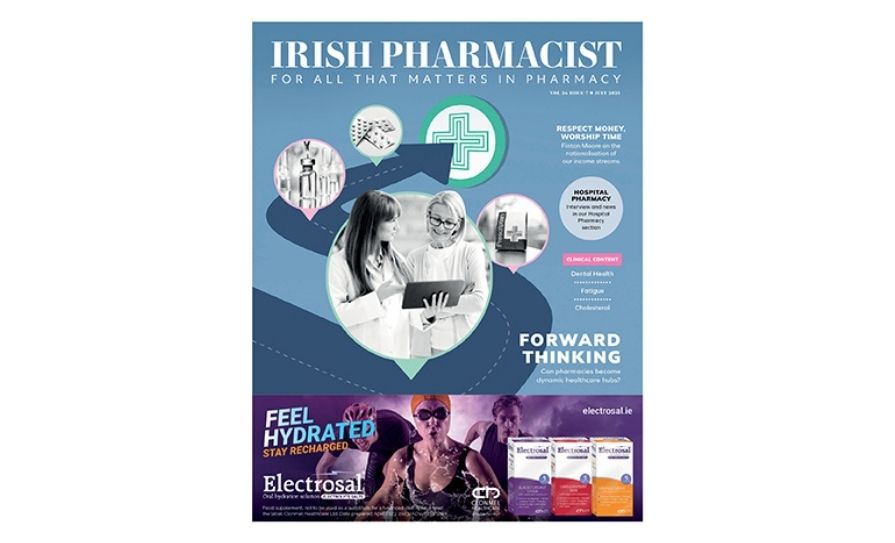Findings from three reports highlight common risk factors in our older population to assist the response to Covid-19
A suite of reports was published recently based on data from The Irish Longitudinal Study on Ageing (TILDA), aimed at assisting Government and the health services to plan and deliver the response to the Covid-19 pandemic in Ireland. The reports respond to emerging national and international data on key risk factors associated with Covid-19.
The reports estimate how common these factors are in Ireland and highlight where additional community services and supports may be required, particularly in the context of the recent ‘cocooning’ policy.
Researchers examined the numbers of people aged 50 years and older living in the community with one or more chronic conditions, such as high blood pressure, lung disease, diabetes, kidney disease and cancer; the commonness of smoking; rates of high-risk medication usage (steroids, immune therapies); numbers of frail persons and their living arrangements, ie, living alone; and rates of utilisation of a range of health and social care services. The reports are part of a concerted effort by the Trinity College TILDA team to provide rapid analysis of its latest data to inform and assist the national response to the Covid-19 crisis.
The purpose of the reports is to raise awareness of how common these high-risk groups are, nationally and at a county level, and how many people are at highest risk, ie, have three or more chronic conditions or have frailty
Prof Rose Anne Kenny, Principal Investigator of TILDA, commented: ‘‘Older persons and those with pre-existing chronic conditions are most likely to experience severe consequences from Covid-19. Because immune defences decline and chronic disease rises with age, people aged 70 and older are at particularly high risk. The purpose of the reports is to raise awareness of how common these high-risk groups are, nationally and at a county level, and how many people are at highest risk, ie, have three or more chronic conditions or have frailty. Furthermore, the services currently being used and possible additional service requirements of vulnerable persons are detailed for each county.’’
Risk factors
The first of the reports, High-Risk Categories for Covid-19 and their Distribution by County in Republic of Ireland (www.doi.org/10.38018/TildaRe.2020-03), details that the following conditions are common in people aged 50 and older:
? Almost 750,000 adults have hypertension (over 50 per cent).
? Over 308,000 adults have asthma or chronic lung disease (20 per cent).
? 183,000 adults have diabetes mellitus (13 per cent).
? 129,000 adults have chronic kidney disease (10 per cent).
? 167,500 adults have past or present cancer (12 per cent).
? 638,000 adults nationally, and over 30 per cent of over-70s, live with three or more chronic diseases.
People who are frail are at increased risk of unpredictable health deterioration following infection, the report states.
Frailty
The second report, TILDA Report on Population Estimates of Physical Frailty in Ireland to Inform Demographics for Over-50s in Ireland During the Covid-19 Pandemic (www.doi.org/10.38018/TildaRe.2020-02), focuses on people who are frail and found:
? Frailty is most common in people 70 and older: 80,600 of 191,880 (total number over 70) are frail.
? Over half of frail adults aged 70 and older (44,500; 55 per cent) do not have any form of informal care or formal support.
? 12,200 over-70s are living alone with frailty. This is 28 per cent of the population over 70 living alone.
? Urban centres have more of the adult population with physical frailty than rural areas. The highest numbers are in Dublin (18,000) and Cork (13,500), and the lowest in Carlow (300) and Offaly (200).
Service use
The third report, Patterns in Service Utilisation: Results from Wave 5 of the Irish Longitudinal Study on Ageing (TILDA) (www.doi.org/10.38018/TildaRe.2020-04), found:
? The most commonly-used service by older adults is their GP: 93 per cent of the population aged ?50 (approximately 1,346,370 people) reported seeing their GP at least once in the previous 12 months, increasing to 97 per cent among adults aged ?70 (approximately 413,630 people). Adults aged ?50 made on average 3.9 visits to their GP in the previous year. This figure changed by age group, to 3.4 visits for adults aged 50-to-69, and 4.4 visits for adults aged ?70.
? A larger proportion of adults aged ?70 years use home care and the public health nurse (PHN) service, compared to adults aged ?50 — 4.3 per cent of adults aged ?50 reported having received home care, increasing to 8.3 per cent of adults aged ?70. Similarly, 4.5 per cent of adults aged ?50 reported having received a visit from the PHN, increasing to 7.9 per cent of adults aged ?70.
? The most frequently used of State-provided community services in 2018 were optician services, where nationally, 14.6 per cent (approx 211,770) adults aged ?50 utilised this service.
? Speech and language therapy was the least used community service; 0.35 per cent (approx. 4,920) of adults aged ?50 utilised this service in 2018.
? 19.7 per cent of adults aged ?50 (approximately 284,810 people) reported visiting the emergency department (ED) at least once in the previous 12 months, increasing to 22.5 per cent among adults aged ?70 (approximately 95,890 people). The average number of visits to the ED was 0.27 visits for adults aged ?50, 0.23 for adults aged between 50 and 69, and 0.32 for adults aged ?70.
? The average number of overnight hospital admissions was also associated with age; 0.28 for adults aged ?50, 0.20 for adults aged between 50 and 69, and 0.35 for adults aged ?70.
Dr Aisling O’Halloran, lead author of the report on physical frailty, said: “Frailty is a condition that is increasingly common as we age. It can affect large parts of our society and significantly impacts on our health and social care services. With an unprecedented crisis like the Covid-19 pandemic, it can make ageing populations even more susceptible to greater health risks. This report aims to inform the Government, HSE and public on the prevalence of frailty across Ireland and to emphasise the importance of proactively increasing support for older people who live with frailty in the community, especially those cocooning and living alone.
“If we listen to the health advice and take measures to mitigate risk, we can keep people safe from harm and protect our health.’’







